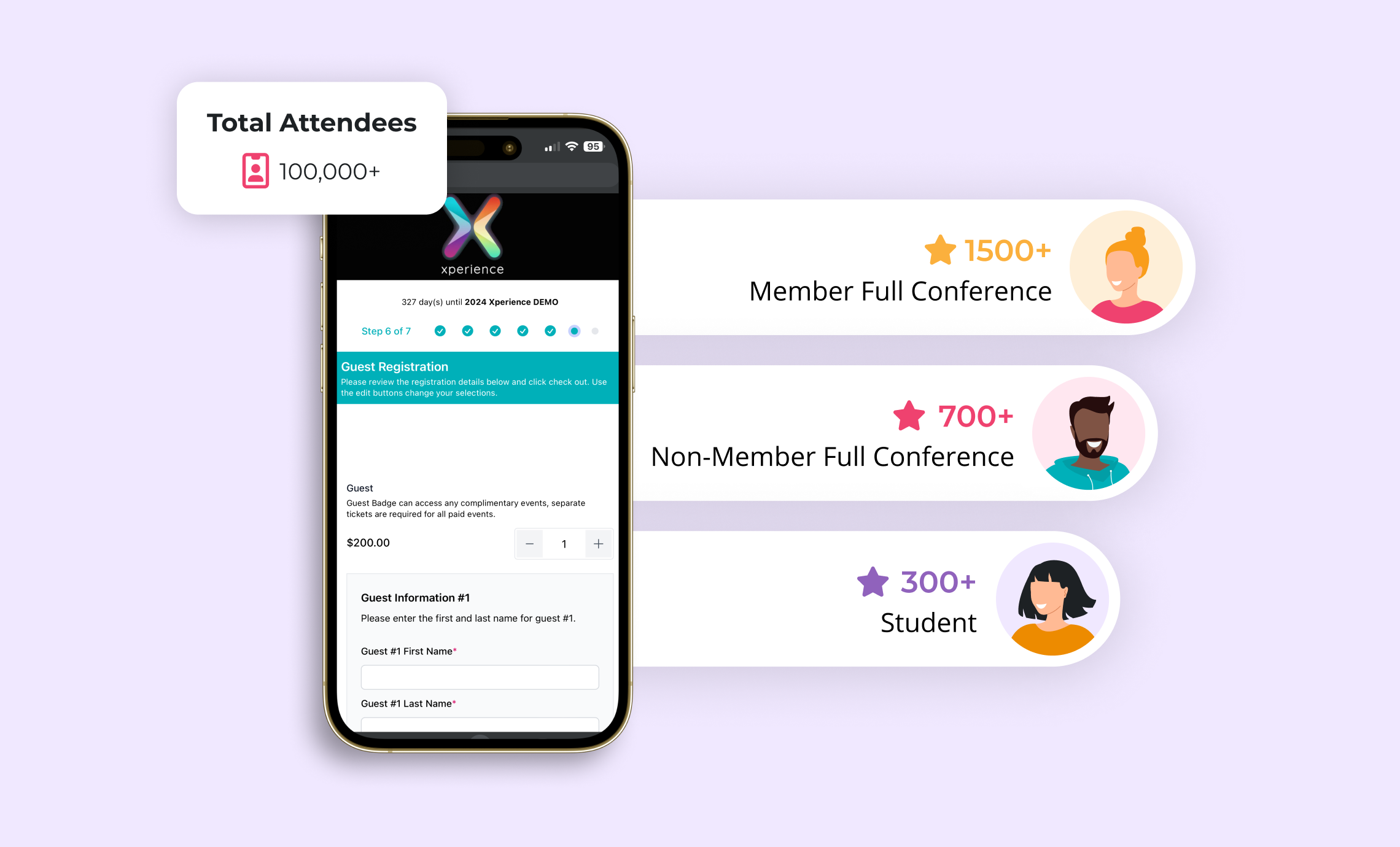Often, you do not achieve success by immediately implementing an idea. It comes from a well-thought-out process. This stems from taking the time to focus and putting a plan in place. Turning a thought into a reality can leave you feeling overwhelmed about where to start. One of the most involved tasks you may have to handle in your career is to produce an event. Thus, a process needs to be prepared with your team to know what steps you’ll be taking. Having strategy in place and utilizing the right resources will make the event planning process more manageable.
What are the five stages of event planning?
There are intricate event planning steps that go into how to plan an event. As a result, we’ve broken down five stages to consider, so you begin your event planning journey. Follow our guide below—event planning made simple with step-by-step directions—to put you on a path to success.
1. Brainstorming
Before you can begin turning your plans into actions, meet with your team to brainstorm your strategy. Thus, consider the criteria you and your team will have to agree on for your in-person event.
Audience – First, ask your team what the purpose of your onsite event is and who the audience is. Discussing who your attendee persona is will allow you to decide on what type of event you’ll be hosting. Is your attendee a member of an association who would like to reconnect with other members? Then you may want to create an environment where attendees can network and easily mingle throughout a room. Perhaps you are looking to promote a product or bring other businesses together to gain leads. For this purpose, you’ll want to include an exhibitor hall as part of your plan.
Types of Venue – After you understand your event’s purpose and who your attendee persona is, look for a venue. You will need to evaluate what will work best for your crowd. Although, keep in mind that your venue must be appropriate for the expected attendees and staff size. You may consider having your event in a hotel, field, restaurant, club, museum, stadium or garden. Furthermore, factor in the weather, time of year and location before locking in your venue. Choose a couple of sites to consider, then request a proposal.
Budget – What you may have to allocate your budget towards can surprise you. Therefore, it is essential to establish a budget. The costliest items event planners have seen their budget go towards are food/beverage, venue, AV, event staff and décor. Since event planning is a complex process, factor in other expenses that may come up later when making a rush order. In addition, you can offset your budget by including exhibitors and sponsors.
2. Building Your Team and To-Do List
Once you’ve gone through your brainstorming stage, understand the types of staff teams that will help carry out your event. To get everyone prepared, create an in-person event planning checklist. In other words, this will assist you and your team in knowing what you will need to accomplish.
Internal Staff – After you have decided on a purpose, venue and budget, have your team start creating an online event website. Once completed, ask them to establish an agenda of scheduled times for sessions, exhibitors, networking or entertainment. The agenda can then be listed on your event website so that your audience can better understand your event. To get the word out about your event, you’ll need your internal team to start marketing to your audience. Therefore, make sure your internal staff knows the budget and resources they will have. While you’re still in the planning phase, ensure your internal team follows up with speakers and sponsors. You will want them to review all the items you need in their contract. During the event, make sure your staff is onsite to welcome and check in your attendees.
Exhibitor Staff – Contract with an onsite event company that can help set up your venue. If you have exhibitors, use a company to build their booths and ship all their items. In addition, you can use an onsite event company to provide you with furniture your venue may not have. Similarly, ask if they provide AV services if your venue doesn’t have all the equipment you need.
Venue Staff – Ensure that your venue has enough staff onsite during your event. For instance, there needs to be enough staff to clean high-touch areas. Additionally, see if the venue has parking and parking attendants.
3. Implementing Your Onsite Procedures
Before and during your event, there will be a few procedures that you will need to put in place to have everything run smoothly.
Online Registration – If you don’t have access to a web development team, partner with an event registration company. Create a custom website that matches the branding of your event. Then create a page where visitors can easily purchase tickets or sign up. Furthermore, set up email communications to provide your event tickets and stay connected with your attendees. Include a barcode code in your confirmation email to easily check-in attendees later.
Marketing – Once your online registration website is fully functional, have your team start implementing your marketing strategy. One of the easiest ways to get started is by sharing your registration page on social media. Every week, get your followers excited about your upcoming event. Share what you believe will be your most popular session topic or your most extensive entertainment. If you have an advertising budget, consider running paid social ads or placing an advertisement in a newsletter your audience persona might read.
Expo Management Software – Utilize expo management software to create a digital floor plan, communicate with exhibitors and provide lead retrieval. Create an interactive floor plan, manage exhibitor directory listings and automatically assign exhibitors to booths during registration. Use the mobile app to help attendees navigate the exhibit hall. In addition, make use of the ability to communicate and sell other sponsorship features available within the software. Remind your exhibitors how they can use your lead retrieval services to increase their ROI from your event. Let your exhibitors in on this tool’s tips and tricks to take advantage of all the app or device features. You will want this tool to benefit them so your exhibitors will purchase the lead retrieval again.
4. Making a Smooth Onsite Experience
On the day of your event, you will want your attendees to be happy when they arrive and stay happy. Your goal should be to create the ultimate attendee experience so that everyone will want to participate in your next event. Thus, you must plan to ensure that your attendees feel comfortable during your event.
Check-In – One part of your event your attendees might not be looking forward to is check-in. Change your attendees’ minds by reducing the time it takes to get their welcome materials. Use an on-demand badge printer that pairs with a scanner to speed up this process. Thus, this will allow an attendee’s information to be instantly accessed and printed out. The whole process will take seconds! As a result, your attendees can say goodbye to long lines.
Crowd Control – To help prevent your sessions from overcrowding or keep general attendees out of a particular session, use attendee tracking. Make your attendees feel comfortable in a session room by setting a capacity size. Thus, you can ensure that everyone in the room has enough space to social distance. Moreover, if you have a private session or networking event, you can make sure the right attendees get in by scanning their badge with the attendee tracking app.
Gamification – If you run an exhibitor hall, your sponsors will only gain sales leads if there is constant attendee traffic. One way to attract more attendees is to use gamification methods. Gamification can be simple and easily accomplished via social media. Have your attendees fill out a survey that is accessible at your exhibitors’ booths or on their social media pages. In the end, exhibitors can view their survey results and award one lucky winner a prize. This helps exhibitors collect attendee information and spread awareness about their company.
5. Debrief With Your Team and Update Your Attendees
After your event is over, you’ll want to meet with your team to review your attendee data and share your takeaways.
Measure Your Success – After your event, decide how you will measure your event’s success. For example, you can determine your success based on ticket sales, product sales or the number of education credits awarded.
Provide ROI to Your Stakeholders – Use the attendee tracking dashboard to review your attendee metrics from your app once you complete your event. You can report this data back to your internal team to see what sessions attendees liked most. This will help you plan for the next event. If your exhibitors utilized lead retrieval, ensure they have their logins to access their lead retrieval portal. The faster an exhibitor can contact an attendee, the more likely they can gain a lead.
Thank Your Attendee – Most importantly, don’t forget to thank all your attendees, vendors, exhibitors and sponsors. For instance, show them your appreciation by sending them a custom email created in your expo management software. In addition, you may want to include a link to a survey to get their feedback. This will aid you when designing future events.
Make Your Next Event A Success
Luckily, not every part of event planning needs to be a manual process. Simplify these steps by utilizing in-person event technology. Learn more by reading about Expo Logic’s helpful and time-saving products.


